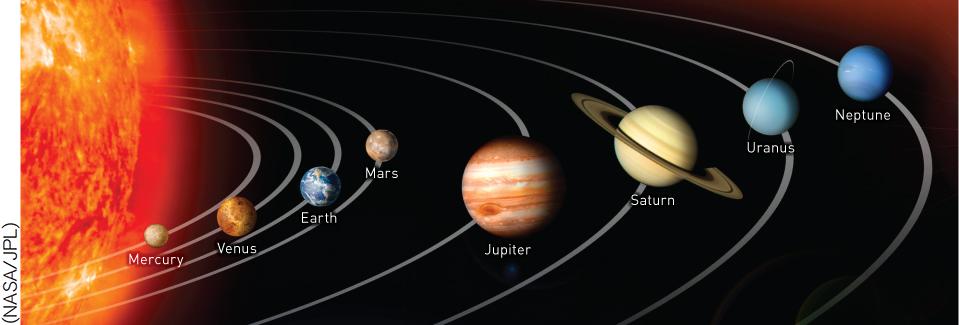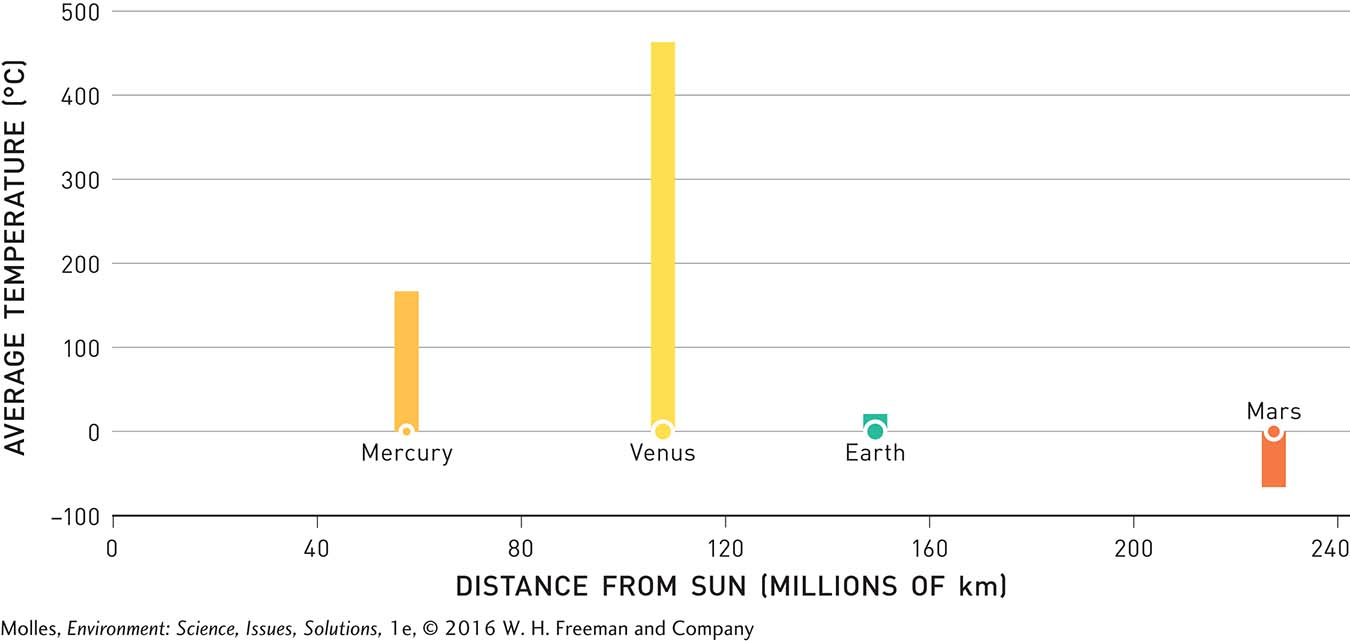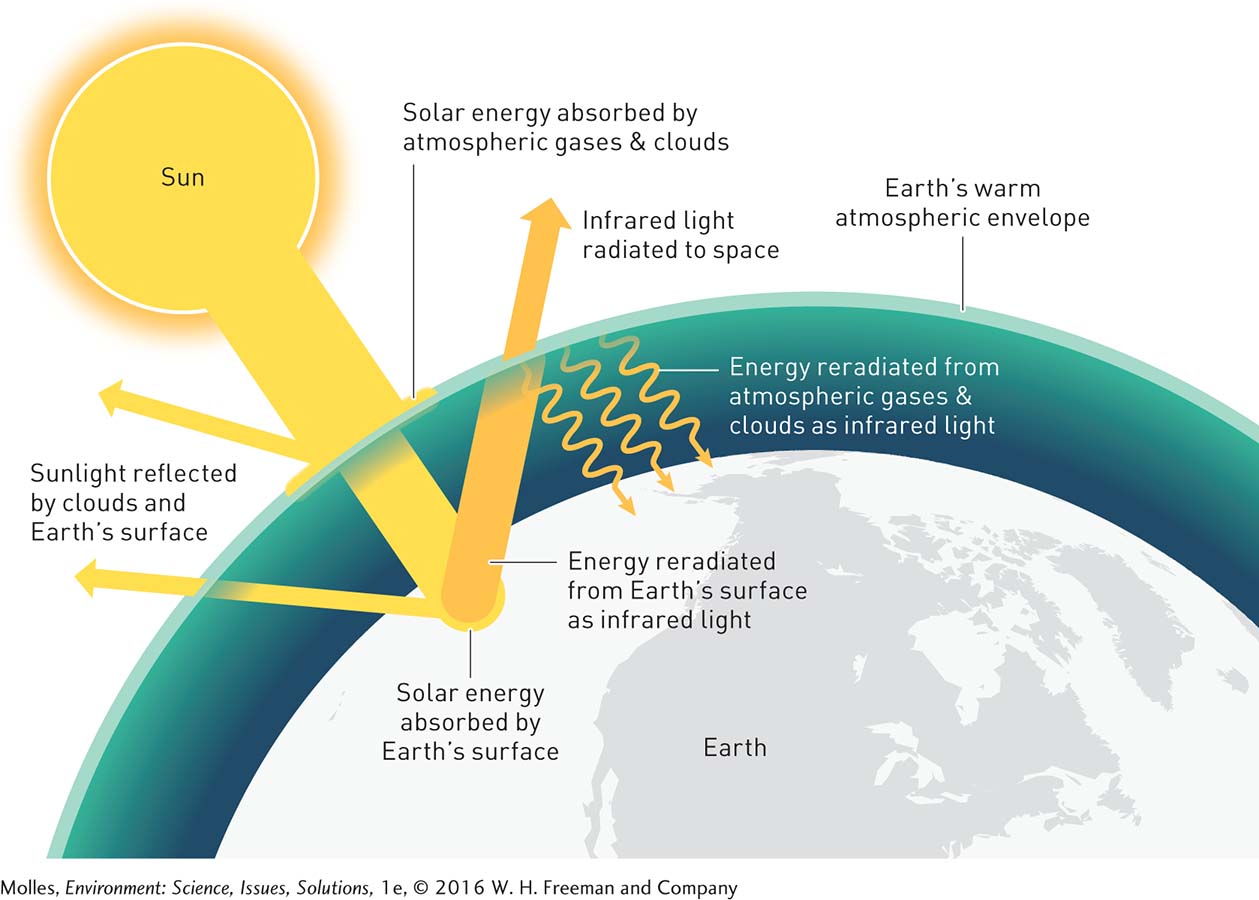14.1 The atmosphere exerts key controls on planetary temperatures
14.1–
431

climate The average weather occurring across a region over a long period, including average temperatures, precipitation, and so forth.
weather Atmospheric conditions, temperature, humidity, cloud cover, rainfall, etc. at a particular place and time (e.g., conditions during a particular day or month).
The seasons occur so predictably that it’s natural to assume that the climate—the average weather occurring across a region over a long period, including average temperatures, precipitation, and so forth—

What is the difference between climate and weather?
Today, we recognize that the climate is changing in new and sometimes unpredictable ways due to the release of greenhouse gases and other human activities. Many ski slopes are no longer receiving the snowfall they once did, and some freshwater streams are drying up in the summertime. But to really understand how Earth is changing and what makes Earth’s climate so unique and fragile, we have to take a journey through the upper atmosphere and to our neighbors in the solar system.
431
Our solar system contains eight planets, but life is only known from our own, Earth, which is the third planet from the Sun. You might wonder why and how so much life ended up here instead of, say, on our two planetary neighbors, Venus and Mars (Figure 14.1).

In August 2012, NASA’s wheeled rover Curiosity landed on Mars and sent back bleak images of a red, stone-

Sitting comfortably between the temperature extremes of Mars and Venus, we find Earth, with an average global temperature of about 15°C (59°F), a climate to which its inhabitants are well attuned. In their 2012 book The Goldilocks Planet: The 4 Billion Year Story of Earth’s Climate, authors Jan Zalasiewicz and Mark Williams compare Earth to the bowl of porridge in the classic fairy tale of Goldilocks and the three bears. They write that our planet was neither too cold nor too hot but “just right” for humanity. What do you think produces the differences in temperature among these planets?
Distance from the Sun explains some of the differences. However, whereas Venus is closer than Earth to the Sun, Venus is 2.8 times hotter than the planet Mercury, which is the closest planet to the Sun (Figure 14.3). Clearly, distance to the Sun is not all that accounts for how climates differ.

Atmosphere and Planetary Temperature
Earth’s atmosphere is a layer of gases that stretches from the surface of Earth to the edge of space, some 500 kilometers above the surface. Our atmosphere is made up mainly of nitrogen and oxygen, which are basically transparent to visible sunlight. On a clear day, most of the Sun’s beams penetrate the atmosphere like a glass window and hit Earth’s surface, where two things happen. Some of that light is immediately reflected back toward the sky, particularly when it has hit a bright surface like fresh, white snow. Most of it warms Earth’s surface like a parking lot on a summer day, and that energy is slowly re-
greenhouse effect The absorbing and reradiating of infrared light by various components of Earth’s atmosphere, resulting in higher surface and atmospheric temperatures.
Infrared radiation has longer wavelengths than visible light, which means it has different properties. Most of it does not pass back through the atmosphere into outer space, but is rather absorbed by clouds and gases such as carbon dioxide and water vapor, creating a warm blanket of air. This phenomenon is known as the greenhouse effect and heats Earth approximately 33°C above what it would be without an atmosphere, making life on the planet possible (Figure 14.4).

432
Differences in the greenhouse effect account for difference in the climates of Earth, Mars, and Venus. Mars’s atmosphere is made up of over 95% carbon dioxide, but it is just 1% as dense as Earth’s, giving its atmosphere very little heat-
Think About It
Which environments on Earth reflect most of the Sun’s energy?
What would physical conditions on Earth be like if there was no carbon dioxide or water vapor in the atmosphere?
If you were trying to find another planet that would support life, what would you look for?